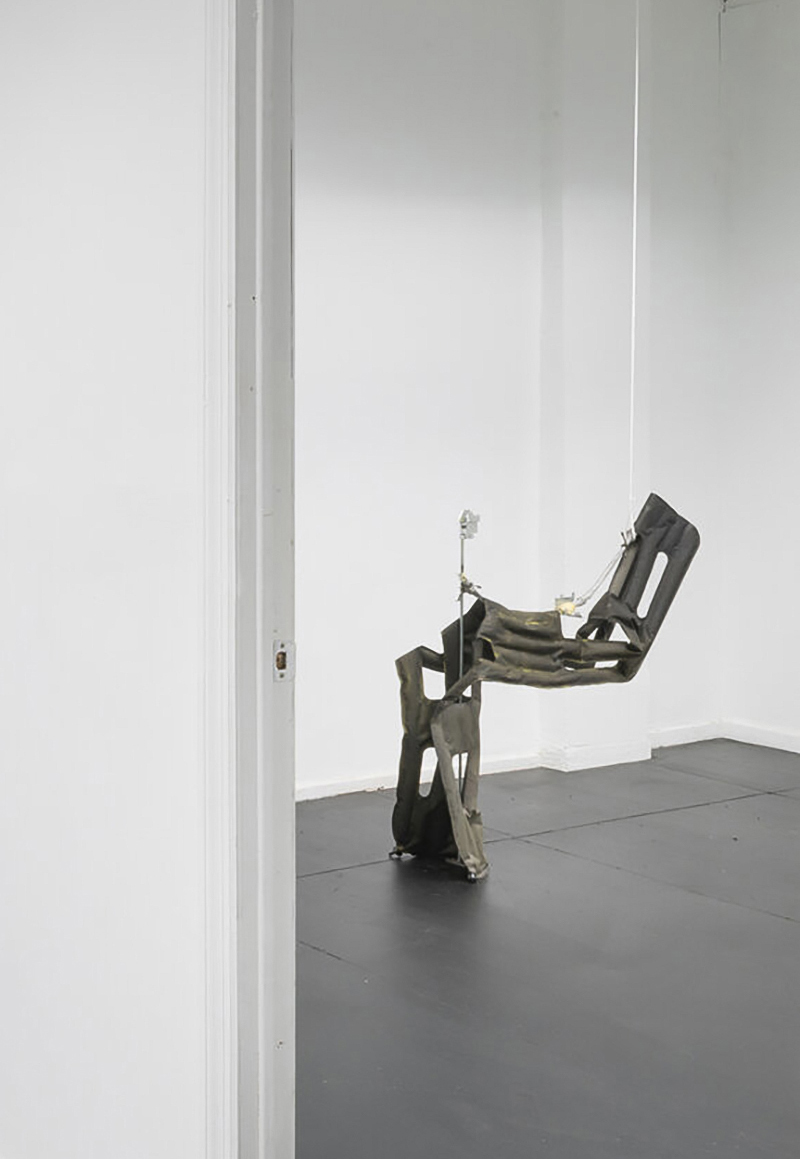
Bryce Kroll lives and works in Brooklyn. He holds a BFA from School of Visual Arts, New York (2013). His sculptures utilize discarded objects that he disassembles, obscures, un-makes, and recombines in experimental configurations that redefine their meaning.
Sibilla: How do you describe your work?
Bryce: For me making work is a byproduct of excessive doubt about the material conditions and contextual framework that allow the work to exist.
Sibilla: Can you expand on what you mean by that?
Bryce: I view it as a byproduct because I don't think you can entirely isolate how the work is described from how it comes to be made. The work is composed of various components, some separable, that are put into definite configurations. A linguistic parallel can be drawn to selecting, combining, and designating units in speech.
But the constituent elements of my work (objects and materials I can get in large quantities for very little money) are often disassembled, obscured, or made incoherent. The act of designation (defining individual components or pieces) is an interpretive framework that becomes a way to obscure them even more by operating in advance so the work conforms to expectations. Since I don’t work from plans, making contains an element of surprise. I am an un-maker converting things that have already been made into things that are unspecified.

Sibilla: We've spoken before about how people who look at your work try to find a parallel for it in order to grasp its concept (ie "this looks like a horseshoe crab"). Do you think that this attempt at defining something that is unknown to us hinders our ability to see the art for what it is?
Bryce: I believe we are hindered only when we already know what things are. I welcome these associations because the interpreter is in an active role. Definition is a process that points back to the category of art.
The work needs to fulfill its function of being art, so it can never be fully unknown, thus creating a vacuum that ideas rush to fill as soon as it is formed. The social realities from which the work emerges, you could say from which it is assembled, recombine to form new definitions.
I think this is part of a larger move away from the post-modern scenario where work cannot be understood without conceptual information toward a more subjective, recursive, open-ended form of art.

Sibilla: It’s interesting you say that because in looking at your work and in responding to your answers, I find myself trying to categorize and compare. I think it’s human nature and I like that you say it puts the viewer in an active role. I think that oftentimes, people don’t know what they’re supposed to think but by applying how we might analyze abstract art—that is, based purely on aesthetics—then we might be able to engage more fully with art that is experimental.
Bryce: If you take anything as pure aesthetics, the problem is it becomes idealist. Formalism is a suppression of everything else. But I agree viewers often look for a framework to understand what they’re supposed to experience. Pure aesthetics would be one way to interpret a work, but in my opinion, there is always an outside contaminant. For me, representation and abstraction are the same. I’ve never understood the opposition. Both share an arbitrary character. But for the record, that doesn’t mean that the activity of working with essentially arbitrary elements should itself be arbitrary.
I think what people want to know is why the work is significant. The distinction I would make is that my work is fluid, dealing in ranges of interpretation and reference. How to grant viewers a greater freedom to form opinions is an interesting question. The work blurs into its environment. It doesn’t rely on the total fidelity of rhetoric, it’s more like an orienting device that reorganizes context into an inexact field.
Bryce’s work is currently on view at Lubov, New York, NY until August 1st as part of “Disease was my Life Coach”.
This interview has been edited for clarity.
